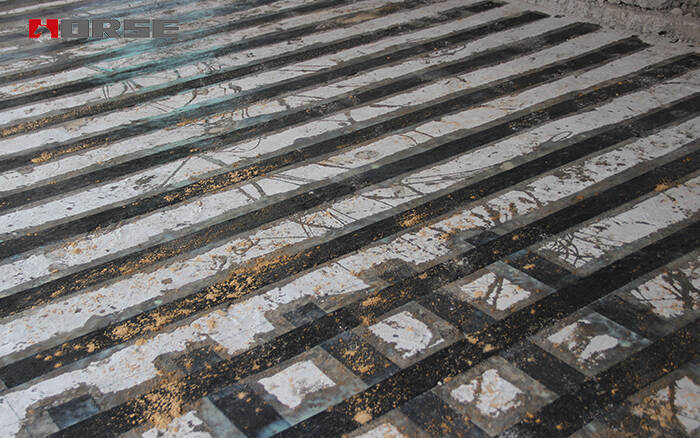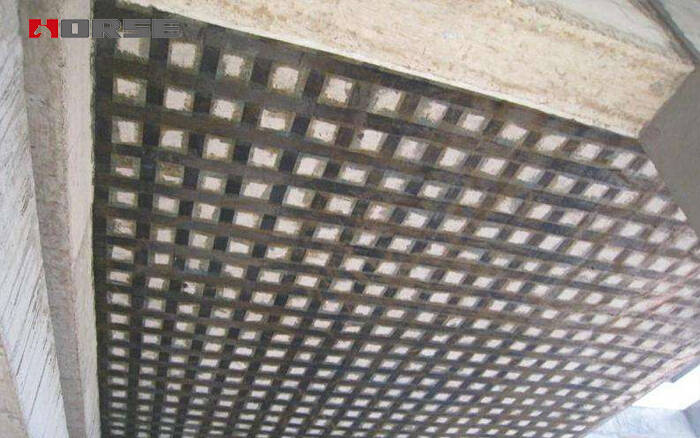Solutions
Horse Construction offers full range of structural strengthening materials with technical supports, documentation supports, products supports, project supports.
Reinforcement Of Concrete Structures Using Composite Materials

Repair and reinforcement of concrete structures using composite materials
This principle of passive reinforcement is an innovative alternative to the traditional solution using glued exterior metal plates which allows:
To increase the resistance of degraded structures, damaged or subject to design or execution defects in order to extend their useful life;
To adapt the structure to changes in its operating conditions or to increase its load-bearing capacity .
These techniques allow:
The increase in the resistance to the shearing force or to the bending of beams;
Reinforcement of structures in the event of modification of operating loads, change of static system, insufficient reinforcement or bearing capacity or faulty execution;
The earthquake-resistant reinforcement of structures to adapt them to changes in standards;
Increasing the strength and rigidity of concrete structures;
Containment of posts, columns or piers;
Reinforcement of structures when creating openings or hoppers.
The implementation of the technique requires a rigorous methodology, compliance with suitable climatic conditions (work sheltered from rain, no direct sunlight, outside temperature between 10 and 25 ° C, limited relative humidity, etc.), conditions of use of the various materials (duration of use of resins, etc.), safety criteria and great precautions when preparing the substrates.

Sizing rules in phase with Eurocode standards have been developed and validated by experimental tests, numerical modeling and feedback on repaired and instrumented structures.
The concrete surface must have sufficient surface cohesion (greater than 1.5 MPa) and suitable flatness because the characteristics of the concrete composite interface are particularly important with regard to the efficiency and durability of the repair. .
The concrete support must be carefully prepared in order to:
Create a satisfactory surface roughness;
Make the surface chemically and physically clean and dry;
Remove all surface laitance and all traces of dust, grease, oil ...
Remove all possible coatings;
Not have any defects (cracks, holes, etc.).
The main techniques that can be used are: wet or dry sandblasting ; washing with water under very high pressure; sanding with a diamond disc.
The choice of the product and the technical solution to be used depends on:
Sizing requirements: stress rupture in shear strength, modulus of elasticity of the composite, behavior tiredness , vis-à-vis the creep under the effect of vibrations, shocks, fires or earthquakes ...
Requirements relating to installation: thermal conditions during gluing, practical duration of use, part geometry, etc.
Durability requirements linked to environmental conditions (temperatures, hygrometry, ultra-violet, etc.), monitoring, maintenance and use of the structure.
Composites are either impregnated with resin at the time of installation, or pre-impregnated in the factory or on site before installation.
The fabrics or the strips are glued to the support (by single or double gluing) using a roller by means of an impregnation resin. The repair ends with the masking operation which eliminates any air bubbles formed between the support and the composite and expels excess adhesive. A closing layer is applied to the fabric or the slat once installed.
You can find anything here you are in need of, have a trust trying on these products, you will find the big difference after that.

High strength, unidirectional carbon fiber wrap pre-saturated to form a carbon fiber reinforced polymer (CFRP) wrap used to strengthen structural concrete elements.

High strength carbon fiber reinforced polymer (CFRP) strip / laminate / plate for structural strengthening and concrete repair

High strength, unidirectional carbon fiber sheet pre-saturated to form a carbon fiber reinforced polymer (CFRP) sheet used to strengthen structural concrete elements.